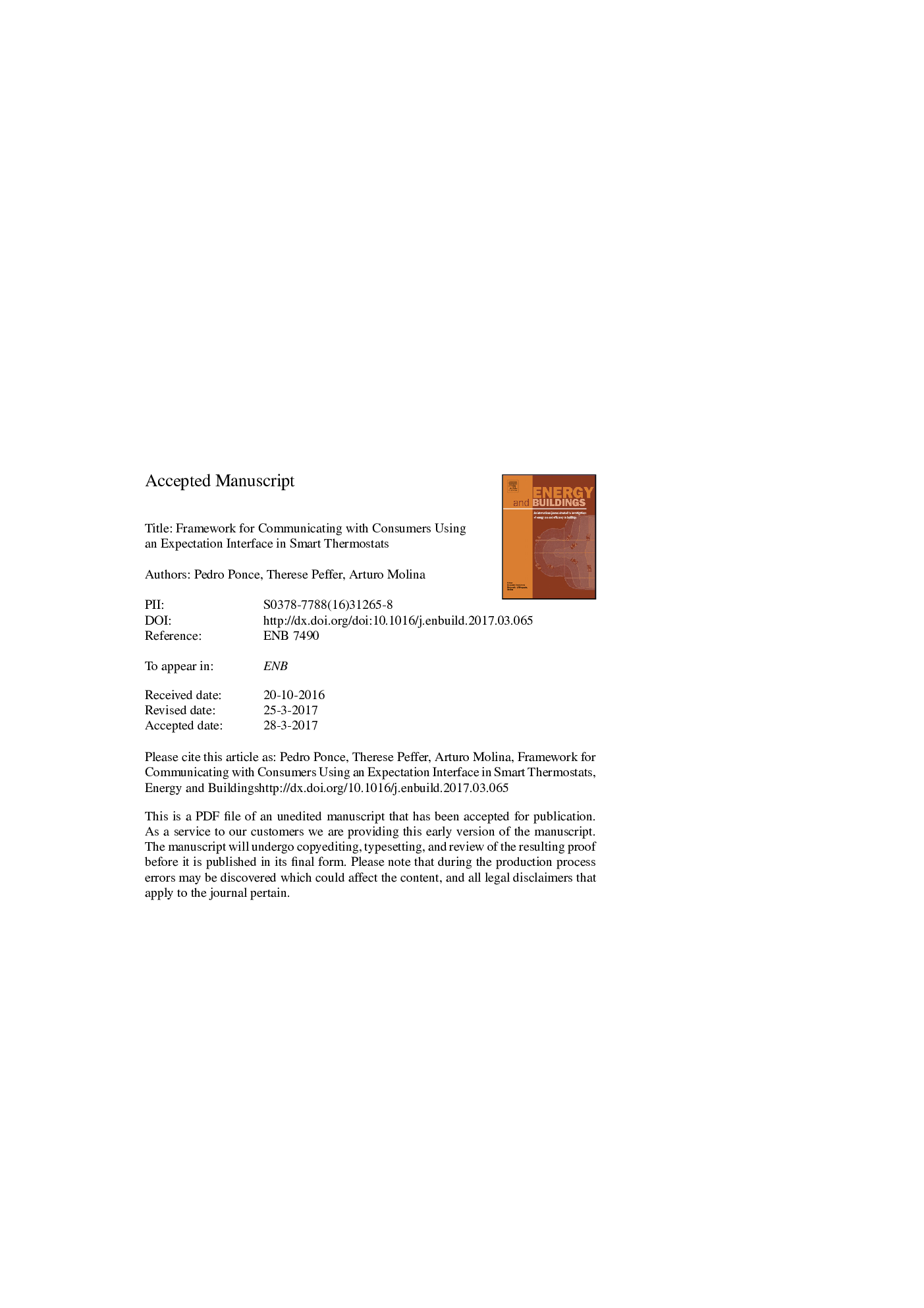| کد مقاله | کد نشریه | سال انتشار | مقاله انگلیسی | نسخه تمام متن |
|---|---|---|---|---|
| 4914156 | 1428945 | 2017 | 27 صفحه PDF | دانلود رایگان |
عنوان انگلیسی مقاله ISI
Framework for communicating with consumers using an expectation interface in smart thermostats
ترجمه فارسی عنوان
چارچوب برای برقراری ارتباط با مصرف کنندگان با استفاده از یک رابط انتظار در ترموستات هوشمند
دانلود مقاله + سفارش ترجمه
دانلود مقاله ISI انگلیسی
رایگان برای ایرانیان
کلمات کلیدی
ترموستات هوشمند، رابط، منطق فازی، شبکه های عصبی مصنوعی،
موضوعات مرتبط
مهندسی و علوم پایه
مهندسی انرژی
انرژی های تجدید پذیر، توسعه پایدار و محیط زیست
چکیده انگلیسی
One of the main problems for adopting smart thermostats is consumers' expectations about smart thermostats. Generally, the interfaces in smart thermostats and smart devices in the energy market are designed without consideration for the expectations of the customers or are not adjusting their operation according to the consumers' expectations and behavior. Moreover, the business model does not consider one part of the product as the main link between customers and value propositions. This study shows a structure for creating a smart interface based on consumers' expectations and shows an extension of the CANVAS business model. Furthermore, the paper re-defines the term “smart” in electric devices as the ability to adjust the system in order to reach the expectations of the consumer and to save energy. This term is not only defined in terms of saving energy but also it includes the customer's expectations. If the system is only smart to control the temperature and save energy, the customer's expectations may not always be achieved; thus, the smart devices are not successfully adopted in households. The design is based on artificial neural networks and a fuzzy logic controller to achieve the consumer's expectations. The results show the interface operation on each block. The classification systems have to operate to detect changes in the customer's market segment. The fuzzy logic controller tries to reach the customer's expectations in order to move the customer into the energy saving market. This expectation interface tries to motivate designers to focus on consumer's expectations for smart devices in the energy market. Not only are the energy requirements important to design a smart thermostat, but also the consumer's expectations to create a successful smart thermostat in the electric market. Smart thermostats can reduce the consumption of electrical energy, but they need to be accepted. This interface provides an effective manner to connect the consumer's expectations with the consumption of energy. This papers shows a proof of concept about intelligent interfaces.
ناشر
Database: Elsevier - ScienceDirect (ساینس دایرکت)
Journal: Energy and Buildings - Volume 145, 15 June 2017, Pages 44-56
Journal: Energy and Buildings - Volume 145, 15 June 2017, Pages 44-56
نویسندگان
Pedro Ponce, Therese Peffer, Arturo Molina,
